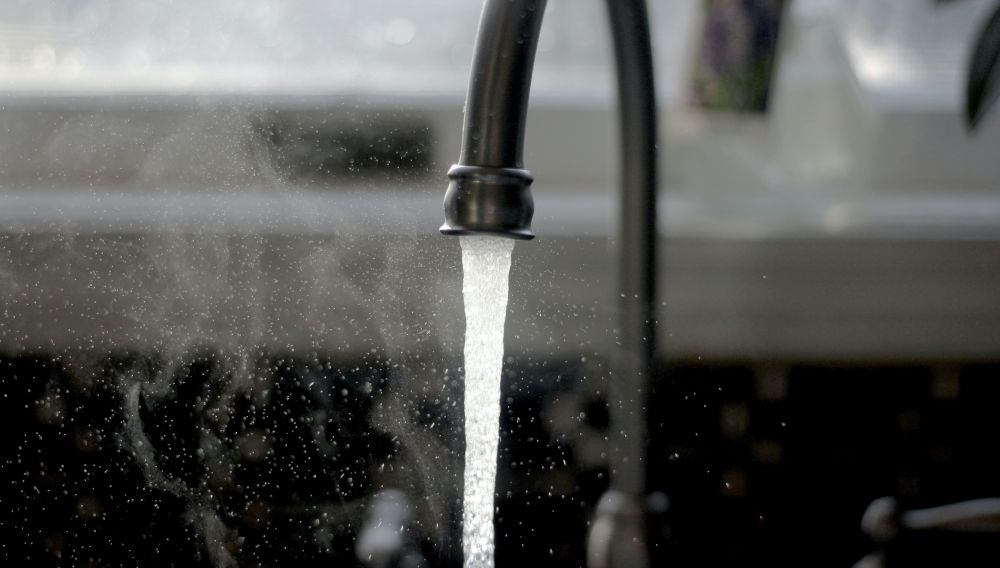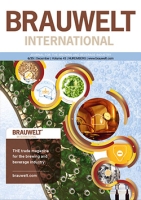Saving water and achieving your sustainability goals
Water scarcity is becoming a harsh global reality. Climate change, population growth and political instability are combining to create extraordinary pressures on this precious resource. The brewing sector is a traditionally heavy user of water in products, and in the intensive cleaning programs required to ensure the highest standards of hygiene. In this article we discuss what brewers need to know to save water and achieve their sustainability goals.
Water was once taken for granted, but now conserving water or using it wisely is becoming a priority within the industry. The demand on clean drinking water sources is making the reduction of water being sent to waste and the reuse of wastewater streams an urgent environmental, economic, and social priority.
These priorities echo the commitments of this year’s UN Water Conference which communicated five themes – water for health, water for sustainable development, water for climate, resilience and environment, and water for cooperation. The fifth and final theme incorporates a call to action. It describes this as a water for action decade where work towards these goals must be accelerated. The themes support the five principles of the SDG 6 Global Acceleration Framework that aims to deliver fast results, at an increased scale, in ensuring the availability and sustainable management of water and sanitation for all by 2030.
Sustainable water use creates good neighbours and loyal consumers
In areas already prone to drought, the soaring temperatures from global warming, and the increasingly prolonged heatwaves these reflect, are a challenge to sustainable water resources. Companies whose facilities are situated in these areas are increasingly recognising their role in, and responsibility to, the local community from a growing awareness that reflects broader ESG aims. The need to protect supply and profitability for your brewery should not be at the expense of the local population.
Being a good corporate citizen requires a responsive, responsible strategy. However, it’s crucial that this strategy incorporates sustainability at its core. This helps protect production but also your reputation as a company, particularly as sustainability is also a key factor for investment. Consumers are increasingly identifying with the moral, ethical, and environmental impacts of their product choices.
If your products don’t exemplify this approach, your reputation can be quickly lost: “If food and beverage companies don’t follow global best practice in water efficiency, or if they don’t clean up their wastewater properly, then their brand can be permanently impaired within days.”
Saving water impacts every part of your business
Effective water management impacts every operational aspect of brewing. Water savings are becoming essential as the new realities of a world of increasing water scarcity dramatically change the approach breweries need to take to water consumption. Optimizing water used in the brewing and packaging processes and reusing wastewater – without compromising food safety and customer satisfaction – is critical.
More action and significant transparency are required to demonstrate your commitment to sustainable wastewater treatment. Inefficient water use is increasingly viewed as unjustifiable on any level, and a barrier to the business resilience necessary to remain competitive.
Managing water quality and hygiene as a complete system
A supplier with a systematic approach to water management – that manages hygiene and water quality as a complete system – is key to successfully maximizing your water. This is best undertaken in a consultative partnership that provides the expertise to promote optimal use of water, efficient reuse, recycling, and wastewater treatment, while adding value that drives differentiation in the market.
However, before initiating any program of water management, it’s important to identify how your water is being used – and where it is being lost. With the quality of your water source, and the quality of water ultimately required in mind, you should ask yourself: am I using water in the most efficient way? Consider whether you need an incoming water treatment plan, or a mass balance, while deciding what potential treatment regime you need to apply. Does this incorporate a removal of gross solids, suspended solids, colloidal solids, mineral removal; or river, sea and water recycling?
Incoming water that comes from a broad range of sources – whether from the mains, a borehole, rivers, the sea, or recycled sources – is inevitably supplied containing various types of impurities and contaminants from mineral, to organic and other undesired content.
If your water source comes from a local river extraction your primary method will combine both physical means and chemical equipment with application of a clarifier, flotation, (sand) filter to achieve the removal of the insoluble material.
Your secondary method will involve biological equipment to remove organic (biodegradable) soluble material. While the next stage involves polishing methods, incorporating equipment such as a clarifier, sand filter, active carbon filter, ultrafiltration, and reverse osmosis to remove any remaining contaminants.
Providing a full picture of your water use
Effective water management is achieved through a journey. The benefits are largely incremental to broader goals, rather than being delivered by the ‘big bang’ of a single project. Using data helps better decision-making, while historical analysis, benchmarking, and mass balance are key tools to drive and achieve water improvements.
Effective water management also relies upon initially creating a complete picture of your water use. Understanding where you are today, helps define the direction of your water journey. Three clear steps enable this to be achieved. First, by building a baseline, you can visualize the data to see patterns, calculate water usage ratios, and ask additional questions about water usage behaviours to highlight areas of seasonality.
This delivers a high-level overview of your historical water use, effluents, and cost trend analysis. From there the scale of your opportunity to implement water savings can be assessed. This detailed snapshot of usage on-site details historical water patterns. These are collected and analysed to identify water management areas for monitoring.
The benefits of a mass balance help in understanding how and where water is used, and its true cost. A water mass balance then begins by following the water through your plant to discover all of the water users, verify when the water goes to drain, and define the water types. A water type provides insight on the cost of water. The mass balance questions how the water is used in each application, what type of water, and the true cost of this water. It also produces the data to highlight your sustainability success stories.
A clear focus on solutions and risks
Secondly, you need to identify where you want to go. The answers to these questions will give you a complete picture. Using this insight, you can determine your priorities and build business cases that lead to water reduction projects, as well as enabling effective feedback for corporate sustainability reporting and water bill validation. From this highly-detailed analysis of your water balance, you can identify the largest consumers of water in volume and cost.
Your final crucial step drives the development of solutions that make the essential water usage improvements your facility needs. This provides solutions that will continue to monitor water usage where required, and reduce risks to your business from water scarcity and rising costs.
Every brewery water history tells a story
Your history tells your water story. Historical data helps with understanding past usage patterns. Knowing where you have been is simply understanding how production variability impacts water usage. By looking at water usage historically, you can see patterns, or you may see spikes of water usage that prompt the necessity for a more detailed inquiry. For example, you could be driving energy projects to reduce your utility spend, only to be surprised by the impact that water has on your total utility breakdown - when you consider both wastewater and incoming water costs together.
Taking this holistic approach to water management makes opportunities visible. Using the information from the mass balance, and from understanding your company goals, you can match the focus - such as identifying whether your water use can be improved through low investment options, such as improving CIP rinses or reusing water from bottlewashers.
Revealing a value stream and opportunities
Defining each type of water based on how it is prepared for each application is called creating the value stream. Simply, as water travels through your facility it gains value. When it leaves your site, the cost of your wastewater should reflect both the cost of the specific value stream, and the cost per cubic meter billed by your water company.
Revealing unseen opportunities, a mass balance gives a complete picture of water use by application and the value of the water that is being used. On most occasions to reuse water requires you make some kind of investment. Financial savings can be made, but also a water stream that uses less water conditioning also saves you energy and water. Sometimes this validates that the largest volume is also the largest cost.
By understanding the individual personality of your water use supports the contention that each facility is a unique case that requires a highly targeted and tailored approach. Nevertheless, regardless of where you start, there are water improvements to be made, with measurement, observation, and experience driving recommendations.
Creating significant water savings in a South African brewery
Like all responsible brewers, ABInBev makes water conservation its highest priority, while maintaining the vital balance between remaining competitive and reaching its sustainability and ESG goals. The company applied a systematic approach to water management for a bottlewasher operation in one of its facilities in the water scarce region of South Africa. Its clear aim - to recycle and save water.
The process involved recycling rinse water to the pre-rinse step as default to boost pre-rinse effectiveness. Water was also recovered from the final rinse, with some of this recycled water being used in crate washing and floor cleaning. Working closely with their supplier, a tailored balance of chemistry and equipment technology was used to achieve significant water savings of 30k m3 H2O per year, reducing costs and supporting ABInBev’s sustainability aims.
The benefits of applying the right water treatment program
By choosing the right water treatment program, adopting water reuse and recycling techniques to deliver additional value, increasing efficiency, protecting assets, meeting regulatory requirements - and reducing the environmental footprint of your operations, while combatting freshwater scarcity - you can also achieve significant savings and help toward your sustainability and ESG goals
With quality concerns always an issue in the brewing industry, using water treatment methods to remove contaminants and particles is crucial to provide a high-quality end-product. It’s now more important than ever for manufacturers to treat water and ensure it is safe for consumption. By driving operational excellence, safeguarding quality and safety, supporting a sustainable future, and reducing TCO, you will be able to satisfy your immediate requirements, yet remain sufficiently flexible and agile to meet the eventualities of the uncertain water future that we all face.
Keywords
hygiene water consumption sustainability wastewater treatment water
Source
BRAUWELT International 1, 2024, page 52-53
Companies
- Diversey Ltd., Northampton, United Kingdom



